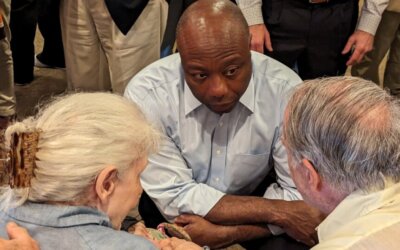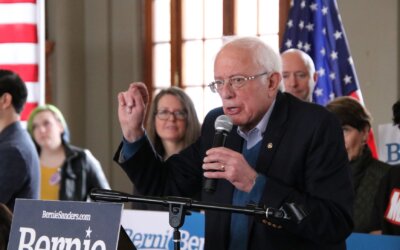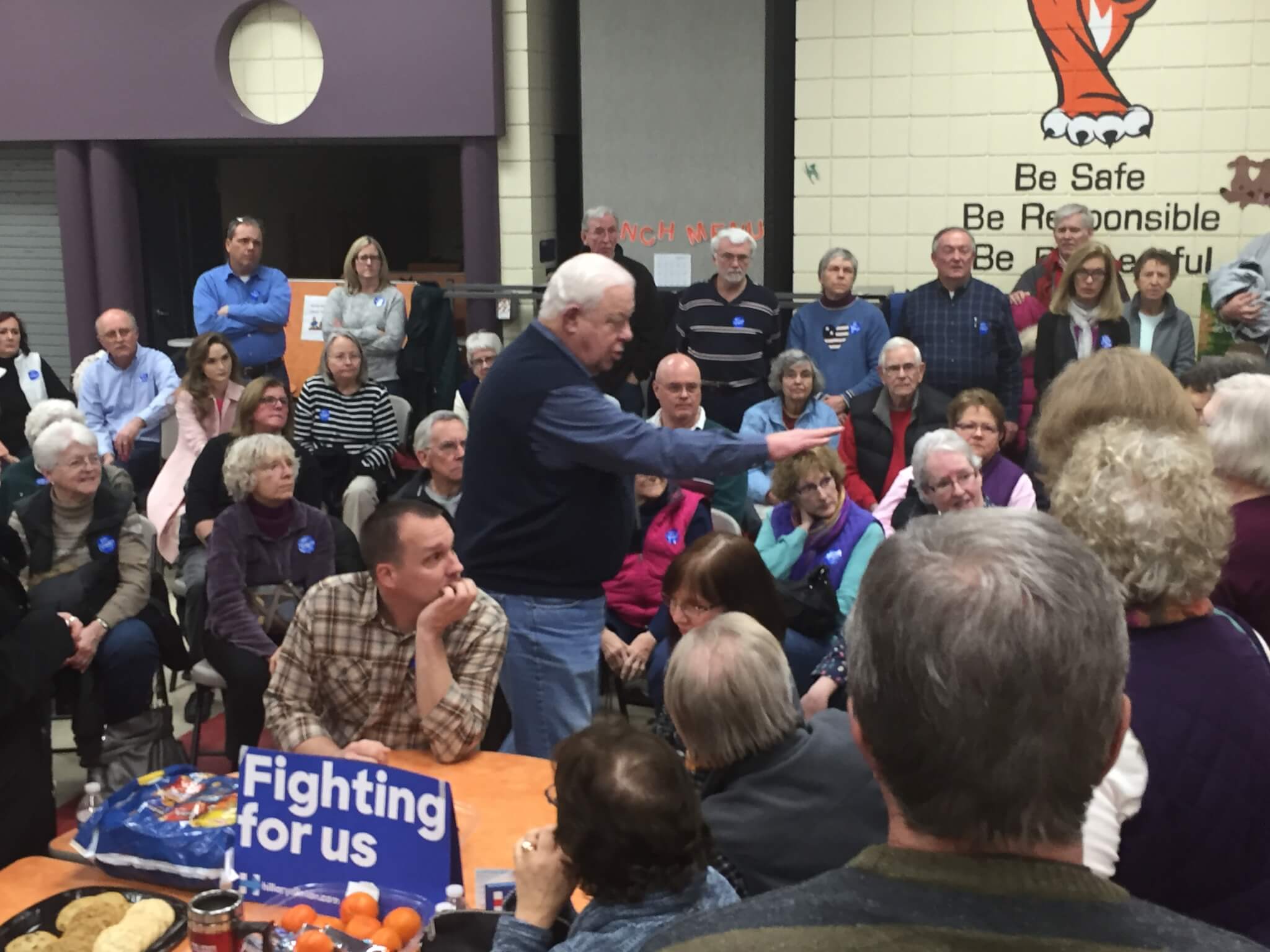
Hillary Clinton’s campaign plans on passing out buttons celebrating their candidate’s glass ceiling-breaking win in the Iowa Caucus at the party’s county conventions this Saturday. But to ensure that narrow record-setting victory Clinton achieved back on February 1 sticks, her supporters will need to turn out for the March 12 county conventions tomorrow for the next step in Iowa’s delegate process. Thanks to the closeness of the final results, Bernie Sanders has a good chance of picking up an extra national delegate.
All 99 Democratic and Republican county parties will hold conventions on Saturday to bring together the county-level delegates selected on caucus night, and to elect delegates for the district and state conventions. The Republicans’ final national delegates will stay linked to the results from caucus night. However, the Democrats’ delegate count will be determined by who shows up at the next steps in the process, and whether Martin O’Malley or Uncommitted delegates swing to one alternative.
You can find a list of all the county conventions’ locations and times for tomorrow here.
Clinton won 23 pledged delegates from the Iowa Caucus to Sanders’ 21. One of the extra two came from her large win in the 3rd Congressional District, where she racked up big margins in Polk and Dallas County. Fortunately for her, that was the only CD with an odd number of delegates. She picked up another one from her very narrow statewide win. Here’s how it breaks down (from The Green Papers – ignore the “Precinct Votes,” they extrapolated the SDEs in a weird way, but the final delegates are accurate):
| Contest | Clinton | Sanders | O’Malley | Uncom | ||||||
| Del | Alloc | Del | Alloc | Del | ||||||
| Precinct | Precinct | Precinct | Precinct | Precinct | ||||||
| Votes | Votes | Votes | Votes | Votes | ||||||
| CD1 | 38,625 | 8 | 19,029 | 3.941 | 4 | 19,596 | 4.059 | 4 | 142 | 21 |
| CD2 | 36,963 | 8 | 17,635 | 3.817 | 4 | 19,328 | 4.183 | 4 | 209 | 4 |
| CD3 | 35,125 | 7 | 18,829 | 3.752 | 4 | 16,296 | 3.248 | 3 | 230 | 7 |
| CD4 | 28,472 | 6 | 14,240 | 3.001 | 3 | 14,232 | 2.999 | 3 | 171 | 11 |
| PLEO | 139,185 | 6 | 69,733 | 3.006 | 3 | 69,452 | 2.994 | 3 | 752 | 43 |
| At-Large | 139,185 | 9 | 69,733 | 4.509 | 5 | 69,452 | 4.491 | 4 | 752 | 43 |
| Total | 44 | 23 | 21 | |||||||
| Delegates | ||||||||||
The number to pay close attention to is the allocated delegates, and how close it is to being round up or down. Clinton just barely received 5 At-Large delegates because her 4.509 rounded up, while Sanders’ 4.491 rounded down (because she won Iowa by just .2%). The next closest to being round up or down is in CD 3, where Clinton got 3.752 and Sanders 3.248. There’s basically no chance of a change in CD 4, where they’re both starting almost exactly at 3. And while Sanders performed the best in CD 2, it’ll still take a lot to get his 4.183 up to a 4.5 in order to make it a 5-3 delegate split in his favor instead of the current 4-4.
So how could the numbers change tomorrow? The same as on caucus night: turnout.
For example, say there’s a county where both Clinton and Sanders tied 50%-50% with 200 county-level delegates each. But if only 150 of Sanders’ delegates and alternates show up, while all of Clinton’s 200 come out, then the base line number for district/state delegates will be lowered, and Clinton would get 57% of the delegates that go on to later stages in the process.
“Making sure we get our delegates out to the county conventions this weekend [is our priority],” says Troy Price of the Clinton campaign. “We have county captains across the state, we’ve got them trained up for this weekend. We’re doing recruitment calls for our delegates and alternates.”
Price was assigned to stick around in Iowa following the caucus to keep a presence for the campaign in this swing state, and also to prepare for the county and district conventions. The Sanders team also had some staffers stay, but they did not reply to a request for comment from Starting Line.
“Our job here is just to make sure our delegates show up,” Price says, who has a small team with him now to help. “If our delegates show up, the results at the end of the day on Saturday will look the same as it did on caucus night, with a little bit of a change here and there because of the O’Malley and Uncommitted delegates.”

The special Clinton buttons for Saturday
Both delegates and alternates can be seated at county conventions, so each side has a large pool to draw from to fill up their allocated seats. The delegates for Martin O’Malley and Uncommitted could in theory try to stay together as viable groups during the conventions, but there’s so few in any county that it’s highly unlikely.
The reasoning behind allowing the delegate count to fluctuate through later stages is so that supporters of candidates who drop out get an opportunity to stay in the process and go with a second choice later down the line. That made a little more sense in years like 2008 where John Edwards’ many delegates held a big role at the county conventions.
The number of delegates for each county vary widely. County parties have leeway in how many county-level delegates they choose on caucus night, which then work their way up to a set State Delegate Equivalent. Polk County is by far the largest with 1,200 delegates. Fayette County, a smaller, rural county in Northeast Iowa, has a sizable contingent of 200 county-level delegates.
The more county-level delegates a county has means that much more work for the campaigns to do in order to turn out supporters tomorrow to keep their numbers the same.
In 2008 Barack Obama used the county conventions to widen his delegate advantage over Clinton. Obama took 16 state delegates to Clinton’s 15 on caucus night, but expanded that to a 25-14 lead after the county conventions. Many of John Edwards’ delegates switched over to Obama, Obama turned out his supporters at a much higher rate, and the Clinton campaign miscalculated their numbers and didn’t realize they were most at risk of losing a delegate in western Iowa’s CD 5, which they did.
Given how close the the statewide number between Clinton and Sanders was on caucus night, don’t be surprised if Sanders picks up a delegate and Clinton loses one, making Iowa a true tie in delegates (for the moment – it could all change again at the district and state convention). Sanders would only need to turn out a slight bit more supporters than Clinton to the county conventions to flip the 5-4 statewide delegates to his advantage.
by Pat Rynard
Posted 3/11/16
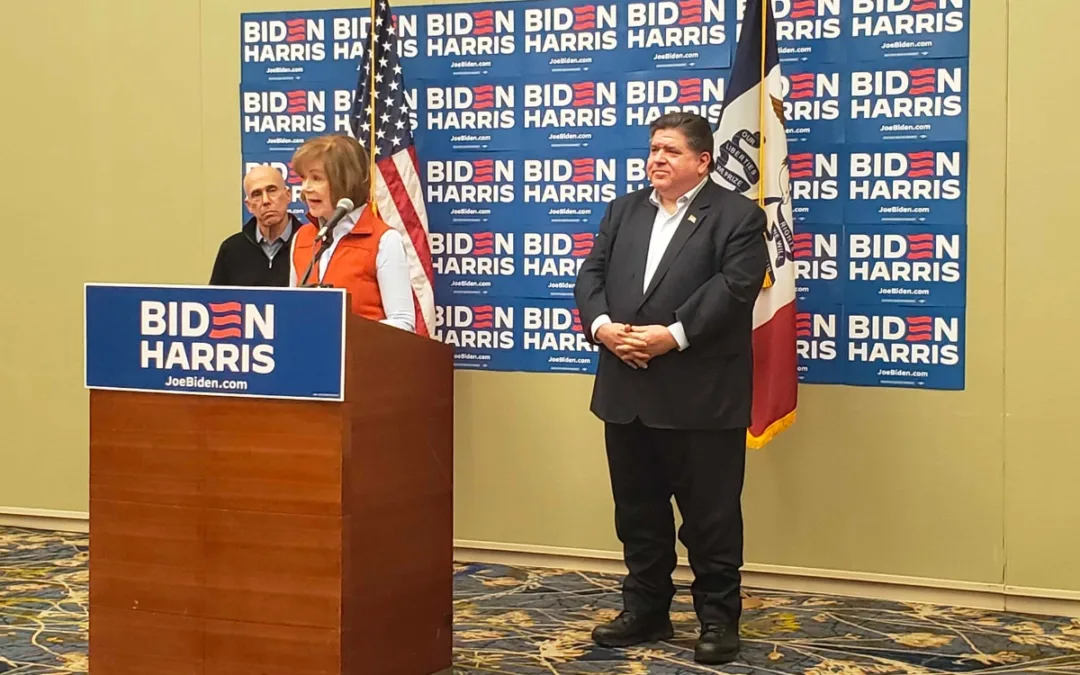
Original, heels or boots: Pritzker says leading Republicans are all MAGA
Illinois Gov. JB Pritzker said all three leading candidates in the Iowa GOP caucus—Donald Trump, Nikki Haley, and Ron DeSantis—represent the same...

Trump tells supporters it is worth dying to caucus for him
Former President Donald Trump continues to encourage his massive base to turn out in droves for him during Monday’s Republican caucus and told an...

Climate change protesters disrupt Ron DeSantis event
Climate protesters disrupted a Gov. Ron DeSantis campaign event in Ames on Thursday night. Three protesters were escorted out of the room at...

Evangelical leaders predict huge caucus turnout, downplay endorsements
Iowa caucus candidates have racked up big-name endorsements—including a notable last-minute flip flop—but one evangelical leader said none of that...

We went to Vivek Ramaswamy’s ‘Vektoberfest.’ Here’s what we saw
As I sat on a park bench eating a bacon-grilled cheese sandwich, drinking an Exile Ruthie straight from the tap, and chit-chatting with a few folks,...
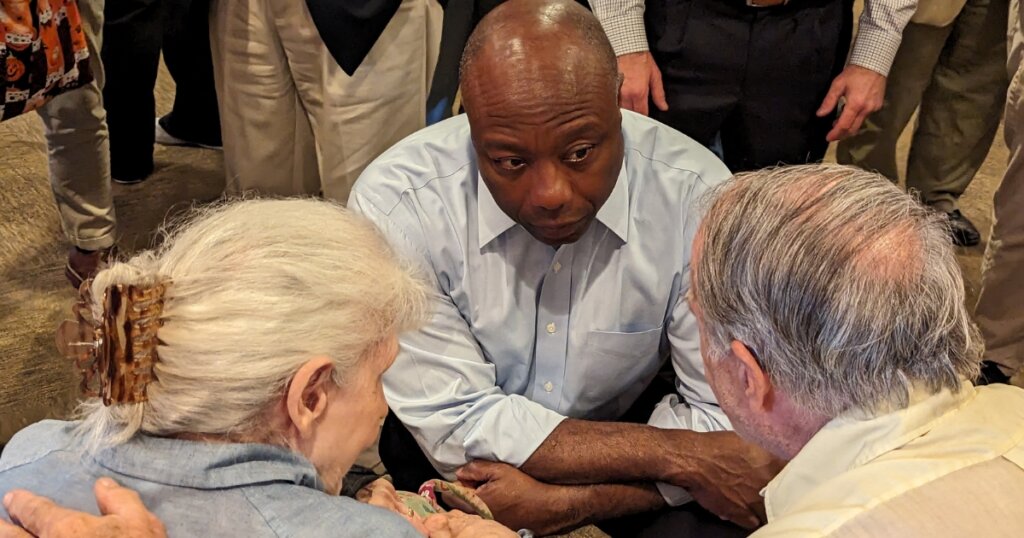
Tim Scott says kids need more exposure to conservatism
While many Republicans across the country have spent the last few years arguing that public schools are being used to indoctrinate kids into leftist...



